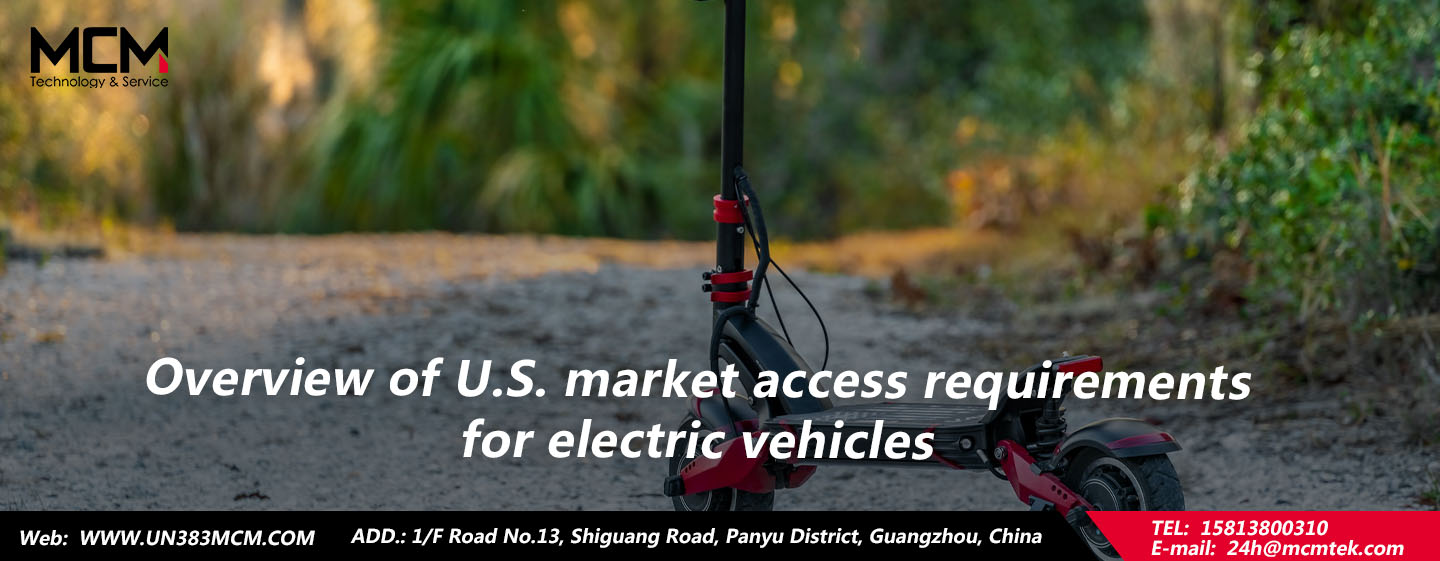Background
The U.S. government has established a relatively complete and strict market access system for automobile. Based on the principle of trust in enterprises, government departments do not supervise all the processes of the certification and testing. Manufacturer can choose the appropriate way to conduct self-certification and declares that it meets the requirements of regulations. The main function of the government is the post-supervision and punishment.
The U.S. automobile certification system includes the following certifications:
- DOT certification: It involves automobile safety, energy saving and anti-theft. It is primarily administered by the U.S. Department of Transportation / National Highway Traffic Safety Administration. Auto manufacturers declare whether they meet the Federal Motor Vehicle Safety Standard (FMVSS) by self-inspection, and the government implements a post-supervision certification system.
- EPA certification: The U.S. Environmental Protection Agency (EPA) performs EPA certification under the authority of the Clean Air Act. EPA certification also has many of the elements of self-certification. The certification is mainly aimed at environmental protection.
- CARB certification: CARB (California Air Resources Board) is the first state in the U.S. / world to issue emission standards for motor vehicles. Entering this market requires some of the most stringent environmental regulations in the world. For motor vehicles ready for export to California, manufacturers must obtain a separate CARB certificate.
DOT certification
Certification authority
The US DOT is responsible for regulating transportation throughout the country, including motor vehicles, sea and air transportation. The NHTSA, a subordinate body of the DOT, is the DOT certified authority responsible for setting and enforcing FMVSS. It is the highest authority for auto safety in the U.S. government.
DOT certification is self-certification (product verification by the factory itself or a third party, and then filing an application with DOT). The manufacturer uses any appropriate means of certification, keeps records of all tests during the self-certification process, and pastes a permanent mark on the designated location of the vehicle stating that this vehicle complies with all applicable FMVSS regulations when it leaves the factory. Completion of the above steps indicates the pass of DOT certification, and NHTSA will not issue any labels or certificates to the vehicle or equipment.
Standard
DOT regulations applicable to automobiles are divided into technical and administrative categories. Technical regulations are FMVSS series, and administrative regulations are 49CFR50 series.
For electric vehicles, in addition to meeting the collision resistance, collision avoidance and other standards applicable to traditional vehicles, they must also comply with FMVSS 305: electrolyte overflow and electric shock protection before they can attach the DOT mark according to relevant regulatory requirements.
FMVSS 305 specifies safety requirements for electric vehicles during and after a crash.
- Scope of application: Passenger cars with an operating voltage of not less than 60 Vdc or 30 Vac electricity as propulsion power, and multi-purpose passenger cars, trucks and buses with a gross weight rating of not more than 4536 kg.
- Test method: After the front impact, side impact and rear impact of the electric vehicle, in addition to no electrolyte entering the passenger compartment, the battery must be kept in place and must not enter the passenger compartment, and the electrical requirements of the insulation impedance must be greater than the standard value. After the crash test, the static roll test is carried out at 90° per roll to confirm that the electrolyte does not leak into the passenger compartment at any rollover angle.
Supervision department
The executive department of DOT certification supervision is Office of Vehicle Safety Compliance (OVSC) under NHTSA, which will conduct random inspection on vehicles and devices every year. The compliance test will be carried out in the laboratory cooperated with OVSC. The manufacturer’s self-certification will be proved effective by experiments.
Recall management
NHTSA issues vehicle safety standards and requires manufacturers to recall vehicles and equipment with safety-related defects. Consumers can feedback defects of their vehicles on the NHTSA website. NHTSA will analyze and investigate the information submitted by consumers, and determine whether the manufacturer needs to initiate recall proceedings.
Other standards
In addition to DOT certification, the U.S. electric vehicle safety evaluation system also includes SAE standards, UL standards and IIHS crash tests, etc.
SAE
The Society of Automotive Engineers (SAE), founded in 1905, is the world’s largest academic organization for automotive engineering. The research objects are traditional motor vehicles, electric vehicles, aircraft, engines, materials and manufacturing. The standards developed by SAE are authoritative and widely used by the automotive industry and other industries, and a considerable part of them are adopted as national standards in the United States. The SAE only issues standards and is not responsible for product certification.
Conclusion
Compared with the European Type Approval system, the US market for electric vehicles has a lower threshold of entry, a higher legal risk and the stricter market supervision. The U.S. authorities conduct market surveillance every year. And if non-compliance is found, penalty will be imposed in accordance with 49CFR 578 – CIVIL AND CRIMINAL PENALTIES. For each vehicle or vehicle equipment project, each violation affecting safety occurs and each failure or refusal to perform the actions required by any of these sections will be penalized. The maximum civil penalty amount for violations is $105 million. Through above analysis of the regulatory requirements of U.S. certification system, we hope to help domestic enterprises to have a comprehensive understanding of the access management system of automobile and parts products in the U.S, and to help meet the corresponding standards and requirements, which is helpful to develop the U.S. market.
Post time: Aug-23-2023


